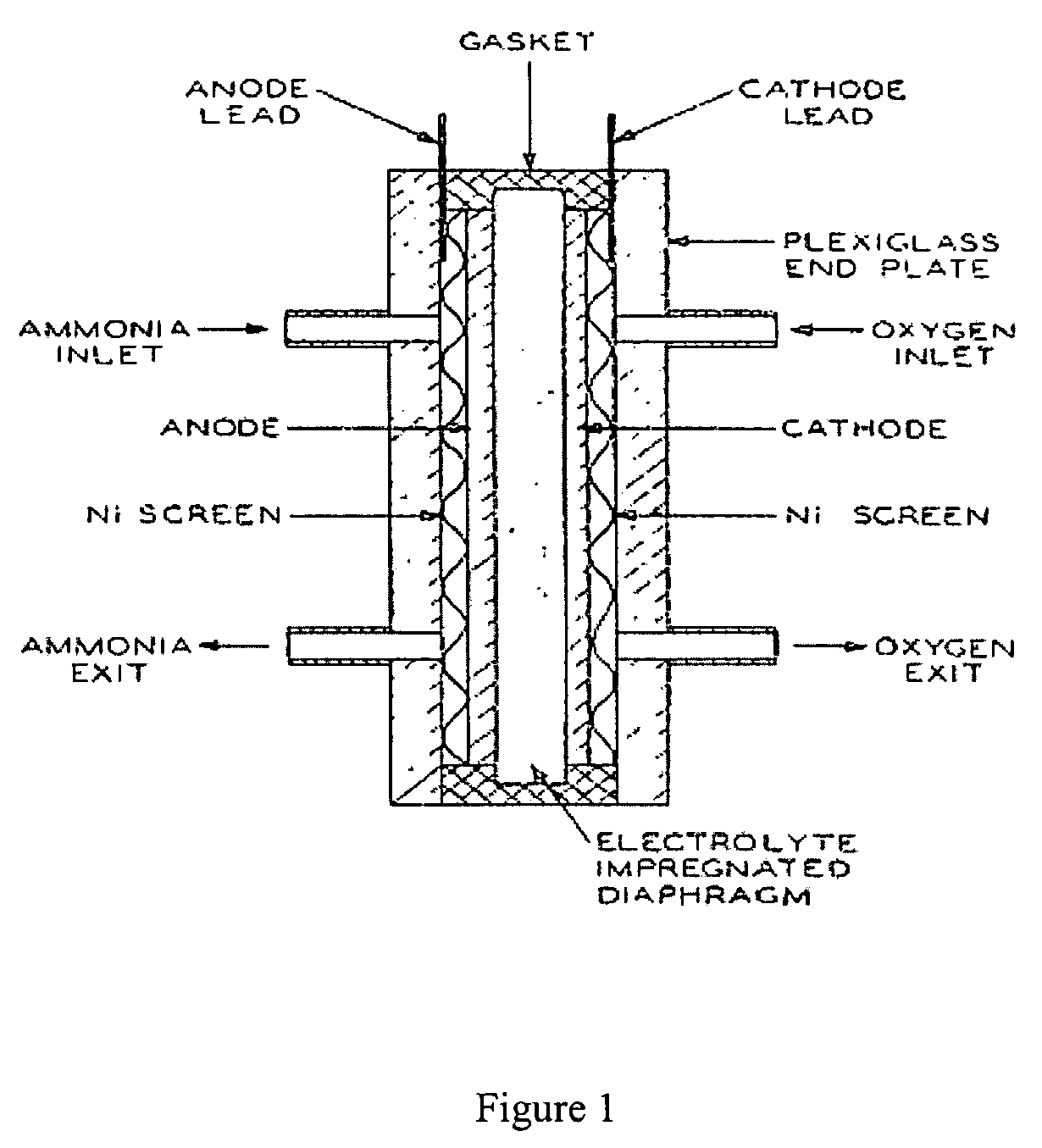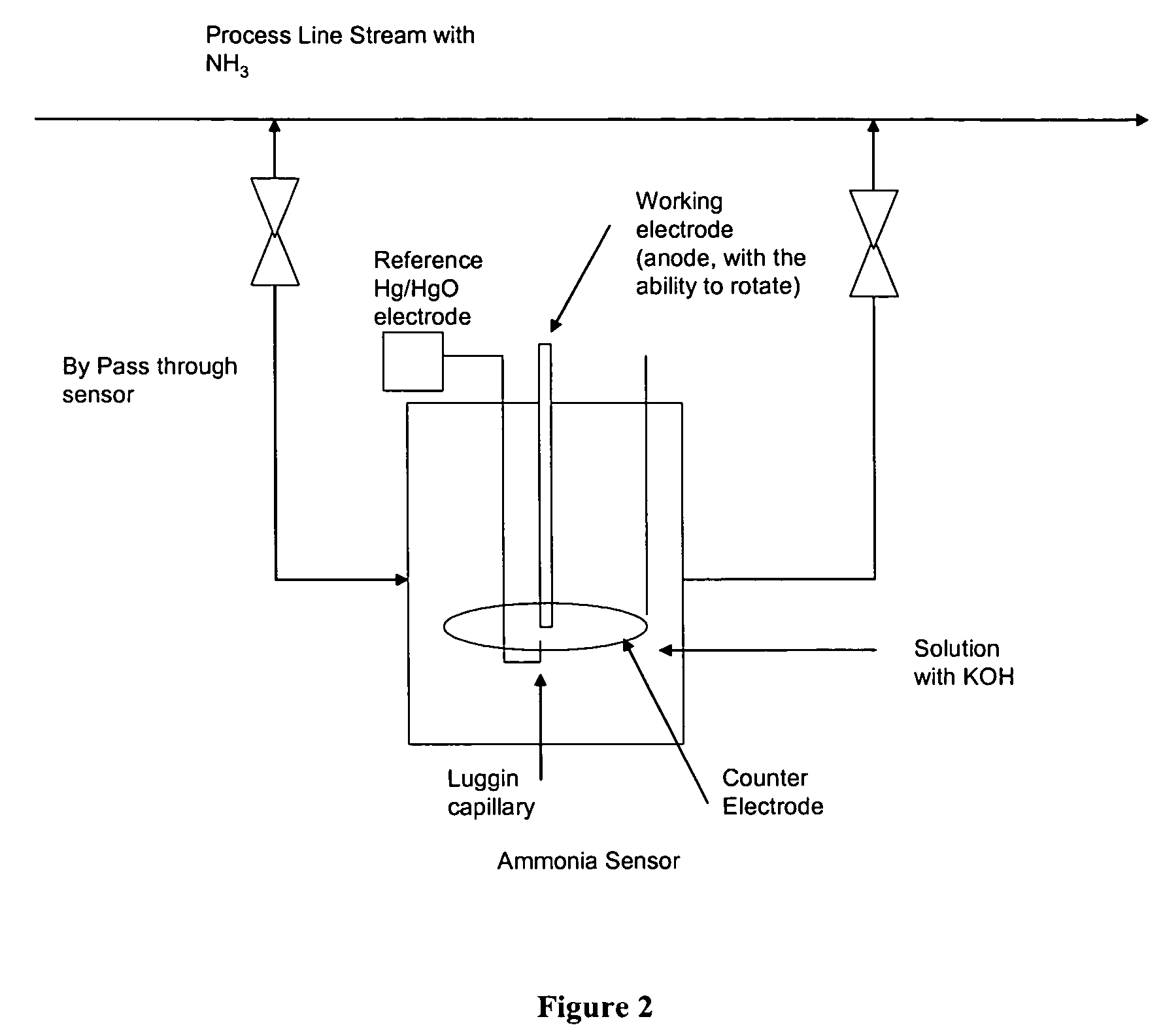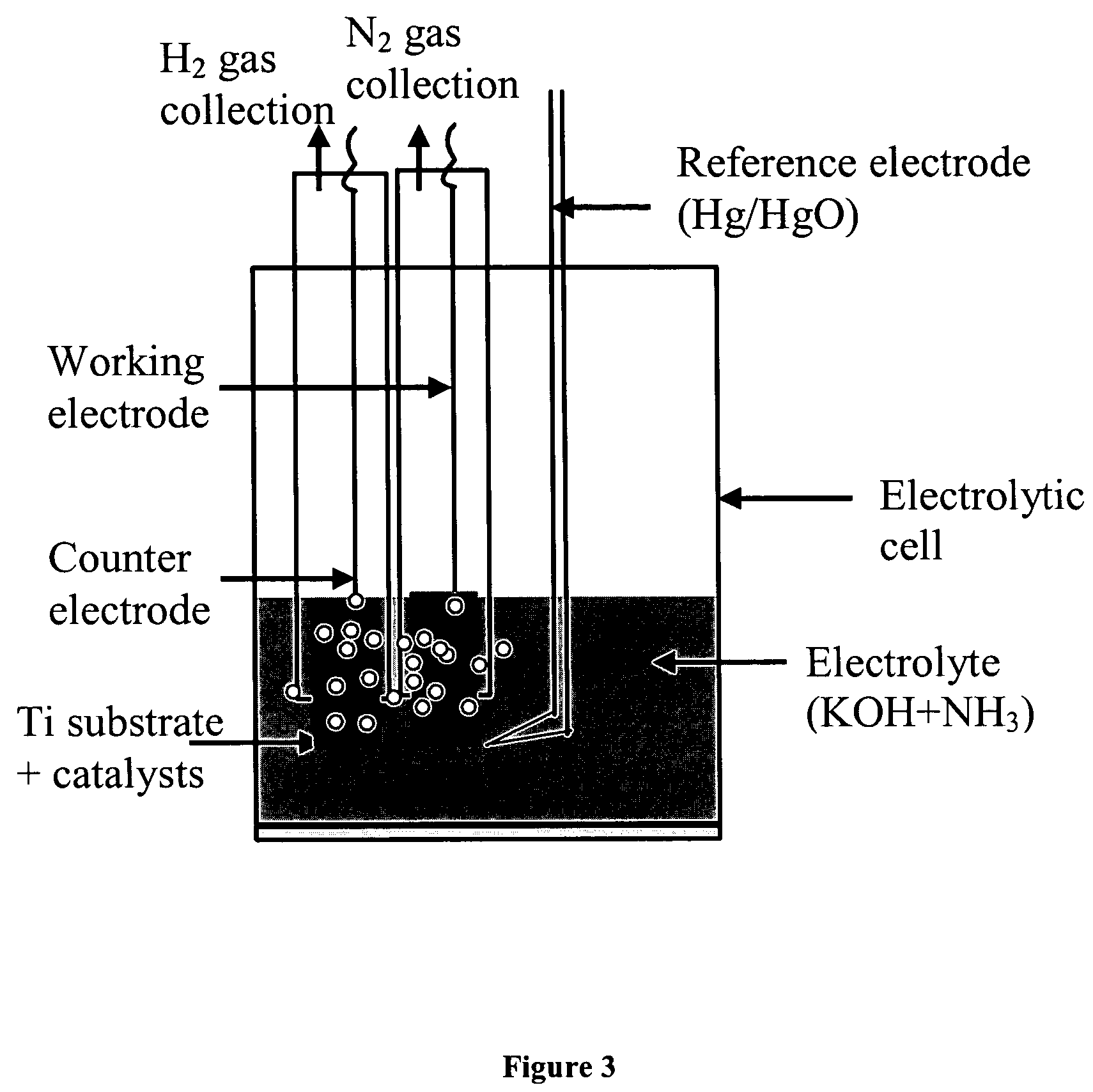Electro-catalysts for the oxidation of ammonia in alkaline media
an ammonia alkaline media and electrocatalyst technology, applied in electrochemical machining apparatus, liquid/fluent solid measurement, energy-based wastewater treatment, etc., can solve the problems of inconvenient economic competitiveness of fuel cell power generation, major problems in storage and transportation, and inability to commercialize hydrogen storag
- Summary
- Abstract
- Description
- Claims
- Application Information
AI Technical Summary
Benefits of technology
Problems solved by technology
Method used
Image
Examples
examples
[0052]Electrodeposition procedure: Plating solutions were prepared with following precursor salts: hexachloroplatinic acid, ruthenium chloride, iridium chloride, iridium bromide, and rhodium chloride (Alfa Aesar). Reagent grade hydrochloric and phosphoric acid (Fisher) were used as supporting electrolyte and to maintain a low pH. HPLC (Fisher) water was used as a solvent. The composition of the plating solution is given in Table 1.
[0053]Titanium was the selected substrate (2.5 cm×5 cm foil, Alfa Aesar). Several pretreatments of the surface were investigated for the improvement of the catalyst adherence and the active surface area: 1) thorough degreasing with acetone in an ultrasonic bath, rinsing before direct use (minimum pre-treatment), 2) sand-blasting, degreasing, rinsing, and 3) D.C. anodization, degreasing, rinsing, using known procedures. (See J-P. Guenau de Mussy, J. V. Macpherson, J-L Delplancke, Electrochim. Acta, 48, 1131, (2003); E. Mahé, D. Devilliers, Electrochim. Acta...
example 32
Ammonia Oxidation as Part of an Electrolytic Cell for Hydrogen Production
[0068]Following results were obtained with developed Pt—Ir catalyst as the anode of an alkaline electrolytic cell. The Pt—Ir catalyst was deposited onto a 60 cm2 foil rolled in the shape of a ring. The cathode was also a ring-shaped titanium foil on which Pt—Ru was deposited. The two electrodes were concentric in their assembly. The cell potentials as well as the anodic and cathodic overpotentials are reported for current densities from 5 mA to 1A (see FIGS. 4 and 5). With the Pt—Ir catalyst at the anode, cell voltages around 0.35V were needed (at 65° C.) to obtain current densities around 1 mA / cm2. The cell voltage was largely due to the polarization overvoltage at the anode (0.25V in such conditions) showing significant improvement of kinetics of ammonia oxidation. The energy efficiency of the cell can be defined as:
[0069]ɛ=ΔE0ΔE=ΔE0ΔE0+ηA+ηc+ηIR
where ΔE0 represents the reversible cell voltage (0.06V)...
example 33
Procedure for Raney Nickel / Platinum Electrode
[0071]A Raney Nickel / platinum electrode was prepared as follows: 1) A solution containing 45 g / L NiCl2, 30 g / L H3BO4, 300 g / L NiSO4, and 15 g / L Raney Alloy was prepared. 2) An electrode made of titanium mesh was prepared and placed into the solution. 3) A counter electrode consisting of a nickel electrode placed into a cotton bag along with nickel shot was prepared. 4) The solution was agitated via a stir bar. At this point, the titanium mesh electrode should be at an angle of 135°. 5) Electroplating galvanostatically at a current density of 100 mA / cm2 and a charge density of 350 C / cm2 was begun. The titanium mesh electrode was flipped every 250-350 C. 6) After the electroplating was complete, the resulting Raney nickel electrode was placed into a 32% w / v NaOH solution at a temperature of 60° C. along with sonic agitation for a period of at least 18 hours; this leached the aluminum present in the alloy into the solution. 7) Once the elect...
PUM
| Property | Measurement | Unit |
|---|---|---|
| temperature | aaaaa | aaaaa |
| current densities | aaaaa | aaaaa |
| temperatures | aaaaa | aaaaa |
Abstract
Description
Claims
Application Information
 Login to View More
Login to View More - R&D
- Intellectual Property
- Life Sciences
- Materials
- Tech Scout
- Unparalleled Data Quality
- Higher Quality Content
- 60% Fewer Hallucinations
Browse by: Latest US Patents, China's latest patents, Technical Efficacy Thesaurus, Application Domain, Technology Topic, Popular Technical Reports.
© 2025 PatSnap. All rights reserved.Legal|Privacy policy|Modern Slavery Act Transparency Statement|Sitemap|About US| Contact US: help@patsnap.com



